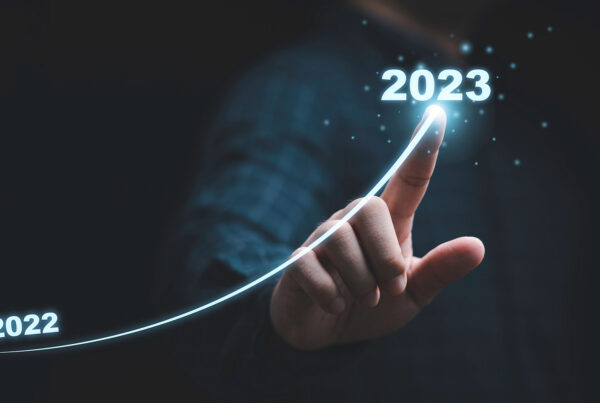A primer for businesses seeking to understand multicultural competency and establish diversity-oriented best practices.
Diversity and inclusion are more than just virtue markers in an organization. Today’s businesses now embrace diversity in their hiring practices, business strategy, and long-term planning – but the reasons for this shift are largely overlooked. Diversity is a continuous practice of appreciating all identities.
Success in a business blossoms when there is an environment that fosters inclusivity and wellness – allowing cross-cultural communication to thrive and intersectionality to flourish. When creating a workplace that prioritizes diversity, there are some fundamental elements to consider.
Defining Diversity
Diversity is an ever-evolving, overarching concept that is measured by the culture it creates. Diversity embraces all cultures, ethnic backgrounds, religions, sexual orientations, genders, and experiences.
“Workforce diversity means similarities and differences among employees in terms of age, cultural background, physical abilities and disabilities, race, religion, gender, and sexual orientation,” according to a study conducted by the Symbiosis Institute of Management Studies Annual Research Conference.1
At the core of diversity stands one infallible pillar: the pursuit and presence of an equitable and anti-oppressive framework.
Diversity built from within an organization encourages each member to emphasize with one another and improves cooperation, innovation, and creativity. It creates a valuable sense of trust among team members.
On the other hand, diversity can also improve a company’s performance externally. Data assessed from the National Organizations Survey (NOS), indicates that companies reporting the highest levels of racial diversity brought in nearly 15 times more sales revenue on average than those with the lowest levels of racial diversity.
Diversity cannot be accomplished passively.
Diversity, as much as it is a guiding principle, is a concept that requires active participation. It is a commitment to honor and respect the differences that make us unique, and apply that to every facet of business. With that active promise comes increased productivity.
Harvard Business Review explains that, “Increasing diversity does not, by itself, increase effectiveness; what matters is how an organization harnesses diversity, and whether it’s willing to reshape its power structure.”
Diversity is a cultural foundation in every workplace; thus, every individual within any given workplace that seeks to embrace diversity has to actively and continuously reaffirm these values.2
In order to effectively promote a diverse, inclusive, and creative work environment, there has to be consistent awareness and growth. All individuals present must maintain a critical knowledge of implicit bias, and a commitment to processing and improving the interconnectedness of climate health, ecology, and racial equity.
In essence, diversity is rooted in the active practice of multicultural competency.
Multicultural Competency
Racial Equity Tools defines multicultural competency as, “A process of learning about and becoming allies with people from other cultures, thereby broadening our own understanding and ability to participate in a multicultural process.”
To be culturally competent, one must be not only respectful of other cultures and ideologies, but receptive to personal change. This can be a challenging process, as self-reflection and personal development can often elicit an emotional, or even defensive reaction. This process can uncover problematic biases that you may harbor, even those that may have the most well-meaning of intentions. For instance, the bold statement that people “don’t see color” in the face of adversity is an unfulfilling promise that feels almost performative.
Often, these implicit biases are not realized until one undergoes the process of self-examination. Here, it is important to reflect on the institutional and cultural context of these subconscious generalizations.3
According to Racial Equity Tools, “[Implicit biases] are expressed automatically, without conscious awareness. Many studies have indicated that implicit biases affect individuals’ attitudes and actions, thus creating real-world implications, even though individuals may not even be aware that those biases exist within themselves.”
How might these biases be perpetuated in the workplace and beyond?
Biases are perpetuated through the intrinsic act of microagressions.4 Microaggressions can be broken into three tiers. These tiers can be defined as personal, cultural, and structural.
These tiers are interconnected, perpetually building off of each other. It is the responsibility of every individual to actively adopt an anti-oppressive mindset in order to dismantle the systematic continuation of microaggressions throughout society, both in and out of the workplace.
Microaggressions
A microaggression can be defined as “the everyday verbal, nonverbal, and environmental slights, snubs, or insults, whether intentional or unintentional, which communicate hostile, derogatory, or negative messages to target persons based solely upon their marginalized group membership.”5
Each individual maintains different life experiences that ultimately help or hinder them in the workplace. This is formed through various factors, such as the access to or lack of education, financial resources, or gender privileges. With that, each person has a subconscious personal bias, and that bias can make it harder for others to succeed in the workplace.
For instance, as an employer, you may unconsciously carry a name bias, which is detrimental in the hiring process and thus impedes diversity in the workplace.
Anglo-Saxon names are considered the “norm” within society, and with that, carry privilege. The University of Chicago and Massachusetts Institute of Technology (MIT) conducted a study that yielded disturbing results: Applicants with stereotypically White names were 50 percent more likely to be contacted for job interviews than those with stereotypically Black sounding names, regardless of parallel qualifications.6
This can be traced back to one word: Implicit bias.7 This personal bias is rooted in the cultural stigma surrounding race and associated class, thus continuing the structural perpetuation of racism, poverty, and limitation of upward mobility in the workforce.
Whether we know it or not, we all carry implicit biases – the importance of acknowledging and overcoming such bias cannot be overstated.
Only when bias is actively understood, and implicit bias is made explicit, can diversity and equity prosper.
Diverse hiring practices can help to minimize unconscious bias – a prejudice that subtly creeps into customer interactions, business decisions, and long-term planning. With diverse best practices as a staple, a truly diverse work environment is afforded necessary space to grow.
Research affirms that intergroup contact reduces bias in the workplace, specifically that contact between Black and White coworkers in the workplace reduces racial bias for White adults.8
With that, it is fundamental that diversity in the workplace is executed with equity as a continuous milestone.
To pursue more information on understanding and mitigating the impact of implicit bias, we have made a collection of educational slides that can be accessed here.
Resources:
- https://www.sciencedirect.com/science/article/pii/S2212567114001786
- https://hbr.org/2020/11/getting-serious-about-diversity-enough-already-with-the-business-case
- https://www.racialequitytools.org/resources/act/strategies/multicultural-competency
- https://academicaffairs.ucsc.edu/events/documents/Microaggressions_Examples_Arial_2014_11_12.pdf
- https://dei.extension.org/microaggression/
- https://news.mit.edu/2003/whats-name
- https://plato.stanford.edu/entries/implicit-bias/
- https://journals.sagepub.com/doi/abs/10.1177/1368430220932636





